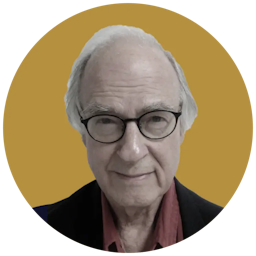In World’s Biggest Election, Narendra Modi Nears Third Five-Year Term, Amid Deepening Divide in India’s Outsized Democracy
Relations with America rank high among issues as hundreds of millions of voters troop to the polls.

India-America relations rank high among issues at stake as hundreds of millions of India’s one billion eligible voters troop to the polls this month in the world’s greatest display of democracy at work in all its glory and imperfections.
Candidates of Prime Minister Modi’s ruling Bharatiya Janata Party are likely to win enough seats in the 573-member parliament to elect him to a third five-year term after the final votes are counted by June 4, but his appeal to Hindu nationalism among India’s 1.4 billion people may deepen divisions between the country’s Hindu majority and its 200-million Muslim minority.
In interview after interview, Mr. Modi, 73, has berated the opposition Congress Party for playing upon the deepest emotions of his enemies, both Hindu and Muslim. “They would vilify us as anti-Muslim and then would claim they are friends of Muslims,” he said on the Indian news channel Times Now. “They created this atmosphere of fear. They were reaping benefits by fear-mongering.”
The deep differences among Indian voters do not mean that India is about to revert to the anti-Americanism of bygone years when New Delhi loudly proclaimed its “neutrality” in the great power rivalry between the Soviet Union and Washington. More reliant on Moscow than on Washington for arms, India under Mr. Modi cannot veer too far from the non-alignment proclaimed by the country’s one-time Congress Party leaders.
Still, India is not going to turn on America as India’s first prime minister, Jawaharlal Nehru, and his daughter, Indira, also prime minister, who was assassinated in 1984, were inclined to do.
“I do not think that Hindu nationalism is either anti-Muslim or anti-American,” says the founding head of the Kalinga Institute of Indo-Pacific Studies, Chintamani Mahapatra. Mr Modi’s party, while “widely perceived as a Hindu nationalist party,” he said, “has deepened the strategic partnership with the United States.”
Mr. Mahapatra, whom I had known when he was a professor at Jawaharlal National University in New Delhi more than ten years ago, was confident that “a possible Modi 3.0 government will continue to strengthen that partnership and coordinate its foreign policies with the United States to promote peace, stability and freedom of navigation in the Indo-Pacific.”
Those words indicate the depth of the new Indian-American relationship that was coming to life even before Mr. Modi’s first election as prime minister in 2014. Since then India has joined two non-military groupings reflecting his desire to move closer to America and its allies. One is the “Quad,” including India, America, Australia, and Japan. The other is the I2U2 Group, so called for the first letters of India, Israel, the United Arab Emirates, and the United States of America.
Don’t think, though, that India can get away from its reliance on Moscow — still the leading source of arms that India needs for its defense against foes on two fronts. First, there’s Communist China, a persistent threat along its northern borders, responsible for outbursts across an often-disputed line in the Himalayas. Then there’s Pakistan, with which India has fought periodically ever since partition in 1947 made India and Pakistan separate countries.
India still gets 36 percent of its arms from Russia, including MiG fighter planes and tanks. That’s down from 76 percent more than a decade ago but way ahead of America, from which India imports 13 percent of its arms.
“We simply cannot walk away from Russia so quickly,” an Indian businessman and political consultant, Lakhvinder Singh, tells the Sun. “Our armed forces rely on Russian systems heavily.” There’s “no way India can completely embrace the U.S. to confront China — the price for that will be simply too high,” he said. “We will remain non-aligned for the foreseeable future.”
Nor is it certain that Mr. Modi will score the overwhelming victory for which he’s been campaigning hard. He’s already got 352 of the 543 seats in the lower house of the parliament but would like to crest above 400 to be sure of full support for his legislative agenda.
His picture is emblazoned everywhere, and he’s scouring the entire country, including districts in southern India where Tamil rather than Hindi is the leading language and where Hindus and Muslims alike are wary of him. In the major south central city of Hyderabad, a high-tech hub that’s also a center of India’s Muslim population, he’s viewed with suspicion if not apprehension.
Just as he’s careful not to offend Russia, Mr. Modi, with the Muslim minority in mind, “has also maintained cordial ties with a host of Islamic countries, including Indonesia, Saudi Arabia, the UAE and Iran,” said Mr. Mahapatra. “In domestic politics, however, a majority of votes of the Muslim minority population will most likely go to the current opposition parties.”
All of which means “prospects for his third term in office look low,” said Mr. Singh. “If he wins, he may not win with that strong a mandate as he had in his earlier two terms. So, his hands will be more tied.”

